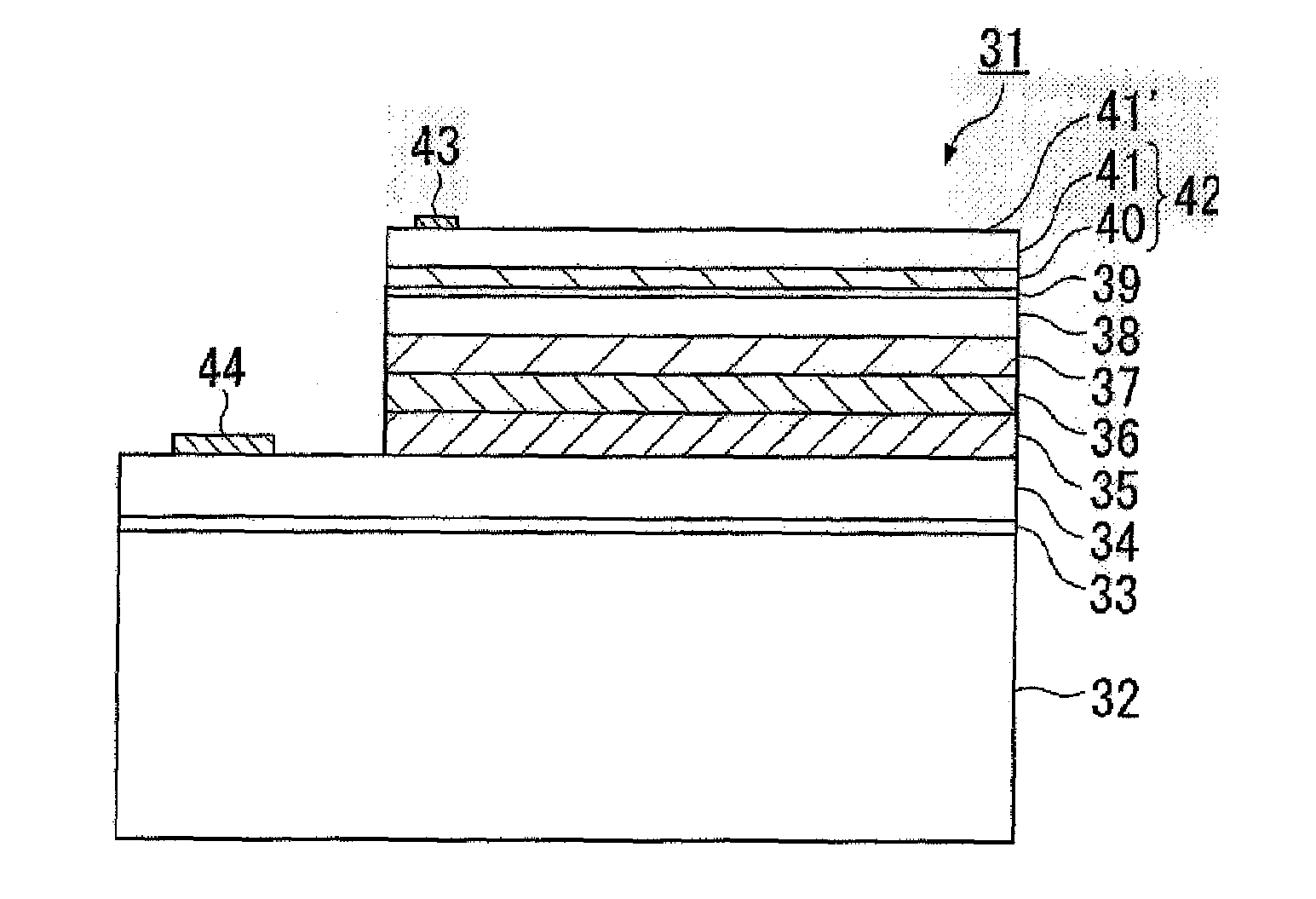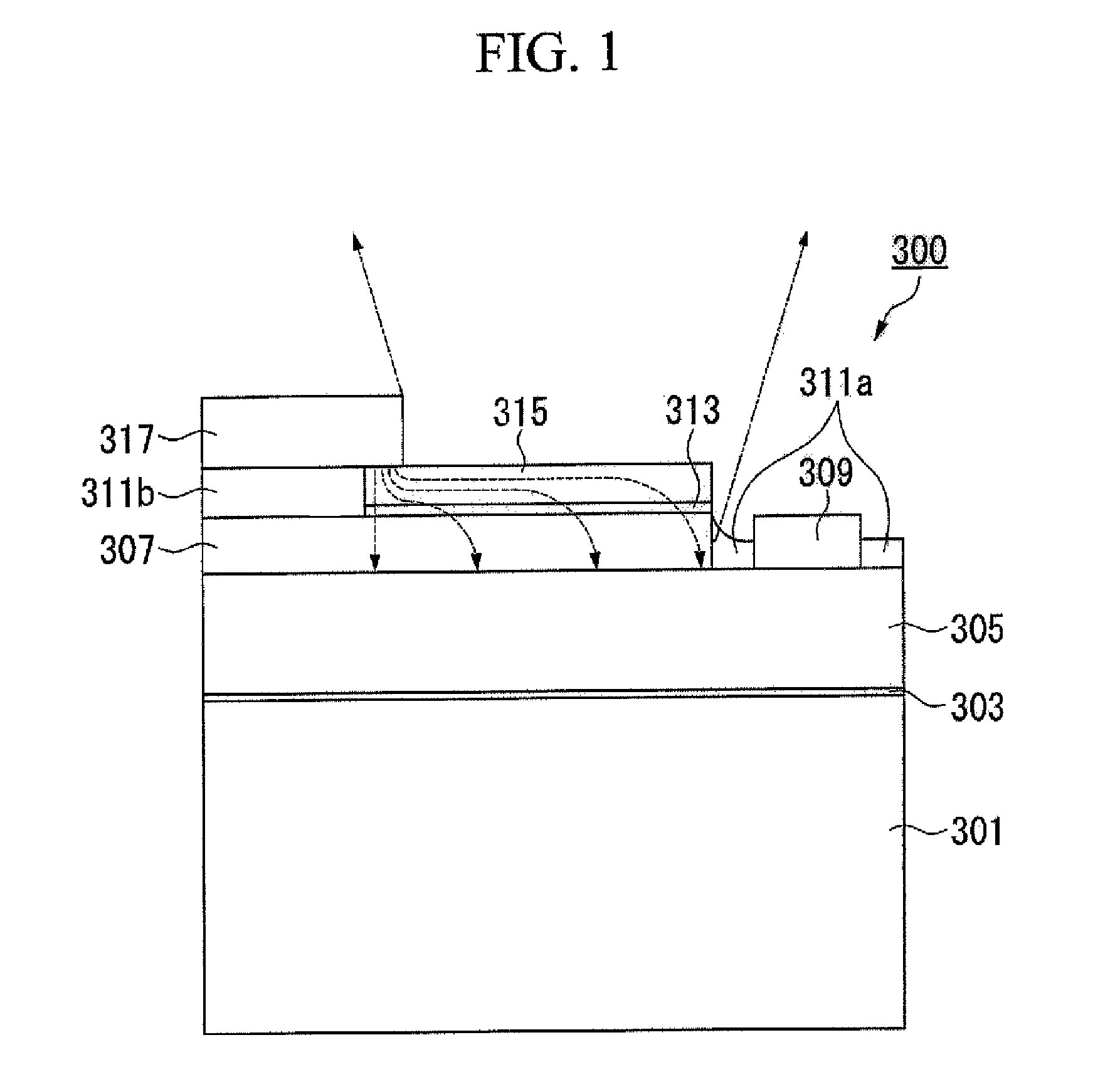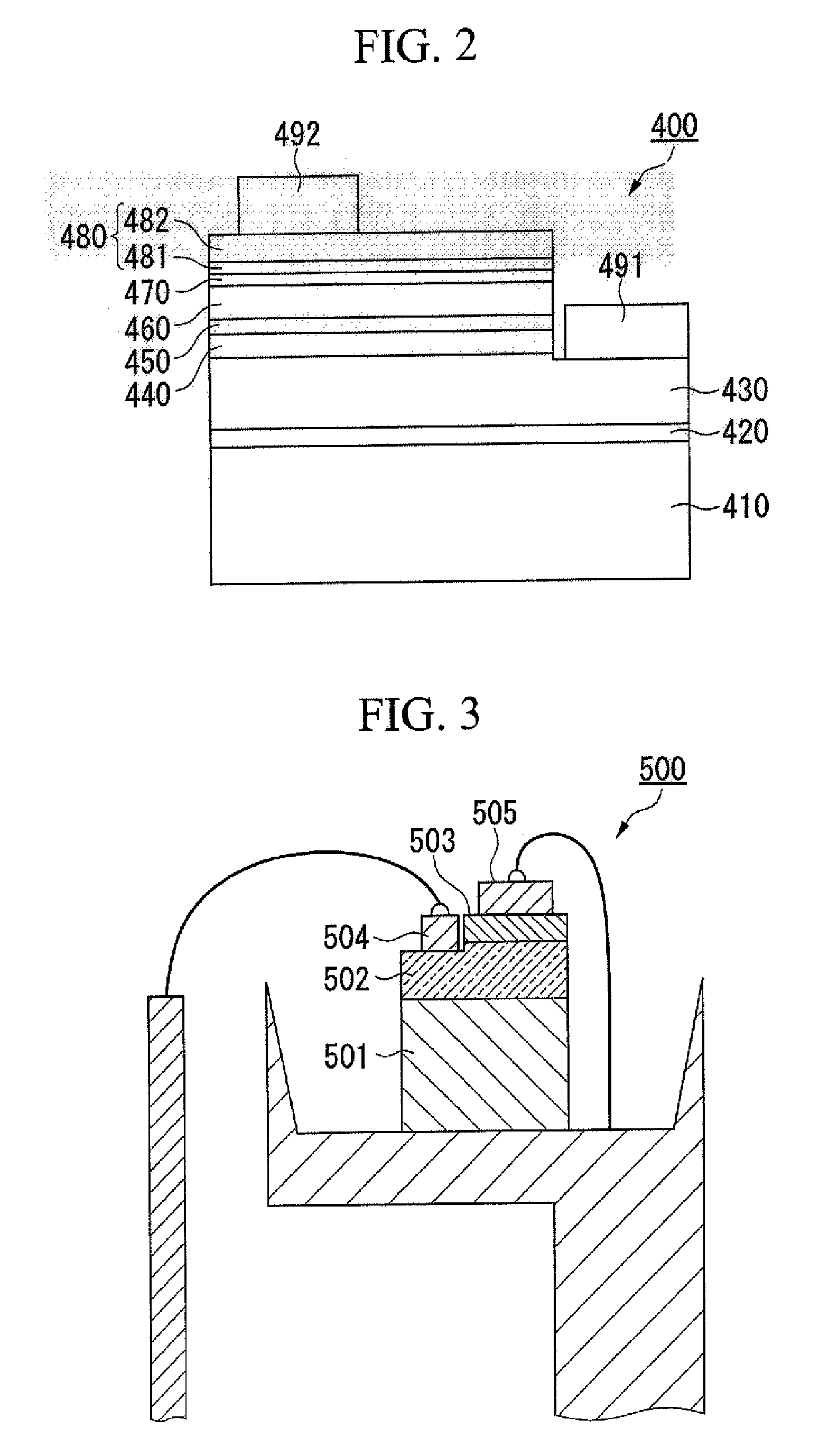Light emitting element and manufacturing method thereof
a technology of light emitting elements and manufacturing methods, which is applied in the direction of semiconductor devices, basic electric elements, electrical equipment, etc., can solve the problems of increasing the reflectivity of the light emitting surface between the transparent conductor or the translucent electrode and the air space, affecting the light transmission efficiency of the light source, etc., to achieve the effect of suppressing the reduction of light transmissivity, increasing specific resistance, and increasing heat resistan
- Summary
- Abstract
- Description
- Claims
- Application Information
AI Technical Summary
Benefits of technology
Problems solved by technology
Method used
Image
Examples
example 1-1
[0056]A wafer was prepared in which on one surface of the sapphire substrate 2 were sequentially laminated the n-type GaN layer 4, the n-type AlGaN layer 5, the light emitting portion 6 having a multiple quantum well (MQW) structure of InGaN and GaN, the p-type AlGaN layer 7, the p-type GaN layer 8, and the metal thin film layer 9 formed from Ni. On this metal thin film layer 9 was formed a transparent conductive film 10 formed from an ITO film having a thickness of 100 nm. The grain size in the surface (light emitting surface 10′) of the transparent conductive film 10 formed from the ITO film was 30 nm.
[0057]Next, on the transparent conductor 12 was formed a mask, and then etching was performed until the periphery of one surface of the n-type GaN layer 4 was exposed. On the exposed n-type GaN layer 4, aluminum was deposited to a thickness of about 0.4 μm, so as to form an n-side electrode 14. On the other hand, on a part of the periphery of the transparent conductor 12 (transparent...
example 1-2
[0059]The light emitting device 1 was produced in the same manner as that of Example 1-1, except that the thickness of the ITO film in Example 1-1 was 320 nm, and the grain size in the light emitting surface was 100 nm.
example 1-3
[0060]The light emitting device 1 was produced in the same manner as that of Example 1-1, except that the thickness of the ITO film in Example 1-1 was 850 nm, and the grain size in the light emitting surface was 200 nm.
PUM
 Login to View More
Login to View More Abstract
Description
Claims
Application Information
 Login to View More
Login to View More - R&D
- Intellectual Property
- Life Sciences
- Materials
- Tech Scout
- Unparalleled Data Quality
- Higher Quality Content
- 60% Fewer Hallucinations
Browse by: Latest US Patents, China's latest patents, Technical Efficacy Thesaurus, Application Domain, Technology Topic, Popular Technical Reports.
© 2025 PatSnap. All rights reserved.Legal|Privacy policy|Modern Slavery Act Transparency Statement|Sitemap|About US| Contact US: help@patsnap.com



